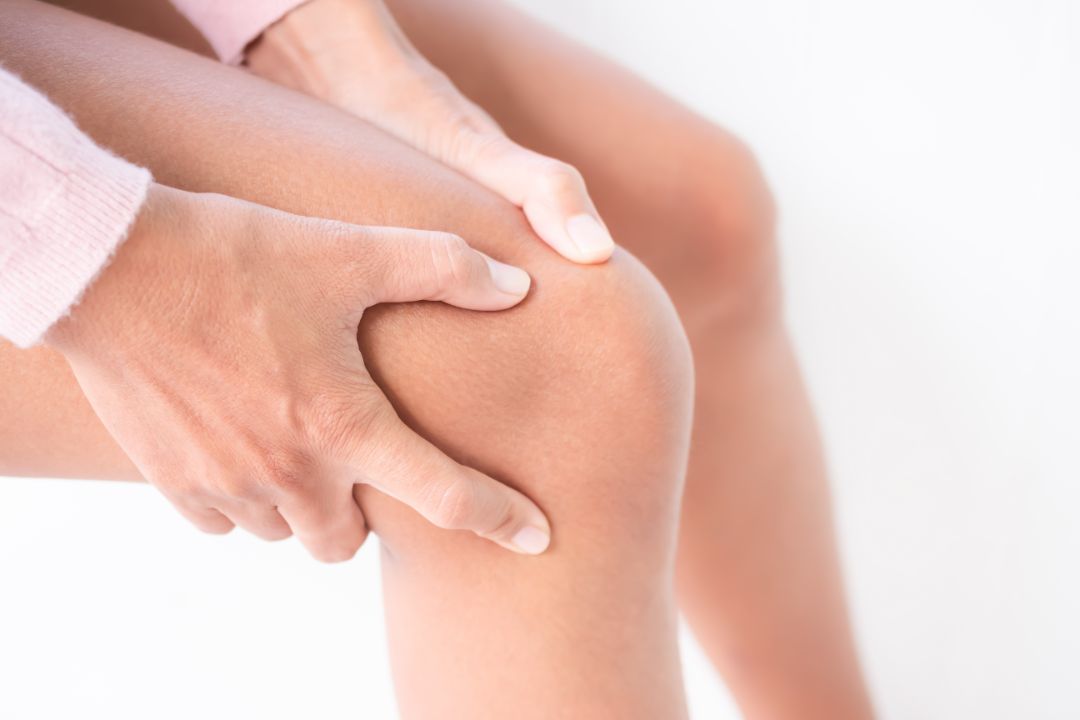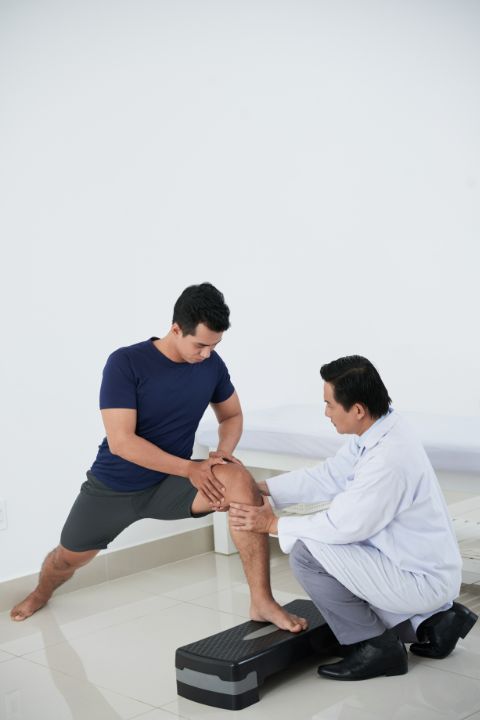Osgood Schlatter’s is a common condition that affects adolescents and is characterised by knee pain. It is caused by growth plate inflammation, which can result in knee swelling and patellar tendonitis. In this section, we will explore the symptoms of Osgood Schlatter’s, effective treatment options, and practical prevention tips.
If you or your child is experiencing knee pain in adolescents or children, Osgood Schlatter’s may be the culprit. Understanding this condition and taking appropriate measures can minimise knee pain and prevent serious knee injuries in young athletes.
Osgood Schlatter’s is a common condition in adolescents, typically affecting active children between 11 and 15. It is caused by a growth spurt, which stresses the patellar tendon, leading to inflammation and pain at the top of the shin bone. This condition affects boys more frequently than girls.
The pain associated with Osgood Schlatter’s is caused by inflammation at the growth plate, which is the area where new bone tissue forms in children and adolescents. The growth plate is located at the end of the thigh bone and the top of the shin bone. It is responsible for the lengthening and shaping of bones as a child grows.
During adolescence, the bones grow rapidly, and the muscles and tendons may not keep up, causing tension and inflammation at the site where the patellar tendon attaches to the tibia bone.
Knee swelling is a common symptom of Osgood Schlatter’s. As the condition worsens, the swelling can become more pronounced, making it difficult for the child to participate in physical activities.
Patellar tendonitis is another condition associated with this syndrome. It is caused by overuse and strain of the patellar tendon, which connects the kneecap to the shin bone. This causes pain and tenderness around the knee area.
Patellar tendonitis can occur in anyone, but it is particularly common in young athletes who engage in repetitive jumping and running activities.
To effectively treat this condition and relieve the associated knee pain, it is essential to identify the symptoms early and seek prompt medical attention.

Photo Credit: wing-wing, Envato
Osgood Schlatter’s is a common knee condition in adolescents, and it’s important to recognise the symptoms to seek the right treatment for your child. Pay attention to the following:
If your child is experiencing any of the above symptoms, it’s important to consult with a healthcare professional to determine the cause of the pain and discomfort. It’s possible that the symptoms may be indicative of this condition, and prompt treatment is important for a full recovery.
Osgood Schlatter’s is often associated with youth sports injuries, particularly those that involve a lot of running and jumping. Children who play sports like basketball, soccer, and gymnastics are at a higher risk of developing the condition.
Parents and coaches should encourage children to follow proper injury prevention techniques such as warming up before exercising, stretching regularly, and using protective gear. If your child is experiencing knee pain associated with sports, it’s important to have them evaluated by a healthcare professional to determine the cause and proper treatment.
There are various treatment options available for managing Osgood Schlatter’s. The approach taken will depend on the severity of the condition and the level of pain experienced by the individual.
Occasionally, Osgood Schlatter’s can be effectively managed with non-surgical approaches. These may include:
In severe cases of Osgood Schlatter’s, surgery may be required. However, this is rare, and surgical intervention is typically only recommended when non-surgical approaches have failed to alleviate symptoms. Surgery may involve the removal of any loose fragments of bone or reattaching the patellar tendon to the shinbone.
Patellar tendonitis is commonly associated with Osgood Schlatter’s. To address this condition, a combination of rest, physical therapy, and medication may be recommended. In severe pain, a knee brace may be used to provide support and minimise movement within the knee joint. In rare cases, surgery may be required to address patellar tendonitis.
It is important to note that early intervention is key in managing this condition effectively. Seeking medical advice as soon as symptoms are noticed can help to prevent the condition from worsening and becoming more difficult to treat.

Photo Credit: DragonImages, Envato
Preventing Osgood Schlatter’s syndrome is possible by taking actionable steps that minimise the risk of knee injury in young athletes. Here are some practical prevention tips:
Before engaging in any physical activity, it’s crucial to warm up your body properly to minimise the risk of injury. Start with stretches and light exercises to increase blood flow and loosen up tight muscles. This can help prevent stress on your knee joint and minimise the risk of Osgood Schlatter’s syndrome.
Building strength in your knee muscles can help reduce the strain on your patellar tendon and decrease the likelihood of developing Osgood Schlatter’s syndrome. Focus on exercises that target the quadriceps, hamstrings, and calf muscles to help improve knee stability and reduce the risk of injury.
Adopting safe practices while engaging in physical activities can significantly reduce the risk of knee injuries. Remember the game’s rules and use proper protective gear, such as knee pads, to minimise risks. Additionally, pay attention to the surfaces you’re playing on and avoid hard or uneven surfaces that can increase the likelihood of knee injuries.
By following these prevention tips, young athletes can significantly minimise the risk of this syndrome. Remember to prioritise safety and take necessary precautions to prevent knee injuries.
Osgood Schlatter’s is a common growth-related knee condition in adolescents. It is characterised by inflammation of the growth plate just below the kneecap and can cause knee pain and swelling.
The common symptoms of Osgood Schlatter’s include knee pain, tenderness below the kneecap, swelling, and difficulty with activities that involve bending or jumping.
Osgood Schlatter’s is typically caused by repetitive stress on the growth plate during periods of rapid growth. This stress can result from running, jumping, or bending, commonly seen in sports and physical activities.
Treatment for Osgood Schlatter’s focuses on managing symptoms and allowing the affected area to heal. This may include rest, ice application, pain medication, physical therapy, and in some cases, surgery.
While preventing Osgood Schlatter’s completely may not be possible, some steps can be taken to reduce the risk. These include warming up before physical activity, strengthening the knee muscles, and practising safe techniques to avoid excessive knee strain.